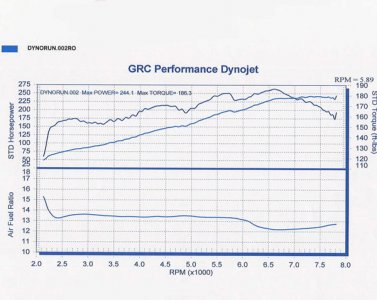Boris_DBD said:
Isn't the VTec suppose to kick in somewhere?
VTEC doesn't cause the torque to rise; it keeps it from falling off. This is a very common misunderstanding.
The first misunderstood fact is that acceleration is a function of torque at the wheels, which is engine torque times gearing, less any drivetrain losses.
The second misunderstood fact is that variable valve timing does not increase torque (or, as a result, acceleration) at higher revs. Its objective is to prevent torque from dropping as revs increase. When you look at the torque curve for a VTEC car like the NSX:
you can see that it's quite flat from roughly 3500 RPM to about 7500 RPM, and there is no huge increase above the VTEC crossover point of 5800 RPM. Yes, there is more "power" (horsepower) but that is a mathematical result of the higher revs, and does not represent more acceleration. Acceleration is fairly constant across most of the revband.
The advantage of a wider, flat torque curve like this is in gearing. Cars without VTEC would be forced to upshift by around 6000 to 6500 RPM for optimal acceleration, and when they upshift, they lose acceleration because of the loss in gearing. This is why VTEC cars are so much faster than their torque numbers would imply - because they gain an acceleration advantage from their ability to stay in a lower gear before upshifting.
If you would like a more lengthy explanation, including how horsepower numbers reflect this, read
this excellent article about the difference between torque and horsepower, and how gearing comes into play.
Boris_DBD said:
I thought NSX suppose to have close to 270HP?
The NSX has 270 hp, measured (as most published power figures are) at the crankshaft (engine). There are losses in the drivetrain (transmission, etc). 244 hp measured at the rear wheels (as most dyno power figures are), net of those drivetrain losses, is a typical figure for a car with headers. Stock, it's usually around 235-240 hp.
Boris_DBD said:
Sorry I'm new to Prime so these might be stupid questions...
Welcome,
! Don't worry, we understand; after all, we all had those questions at one time.









